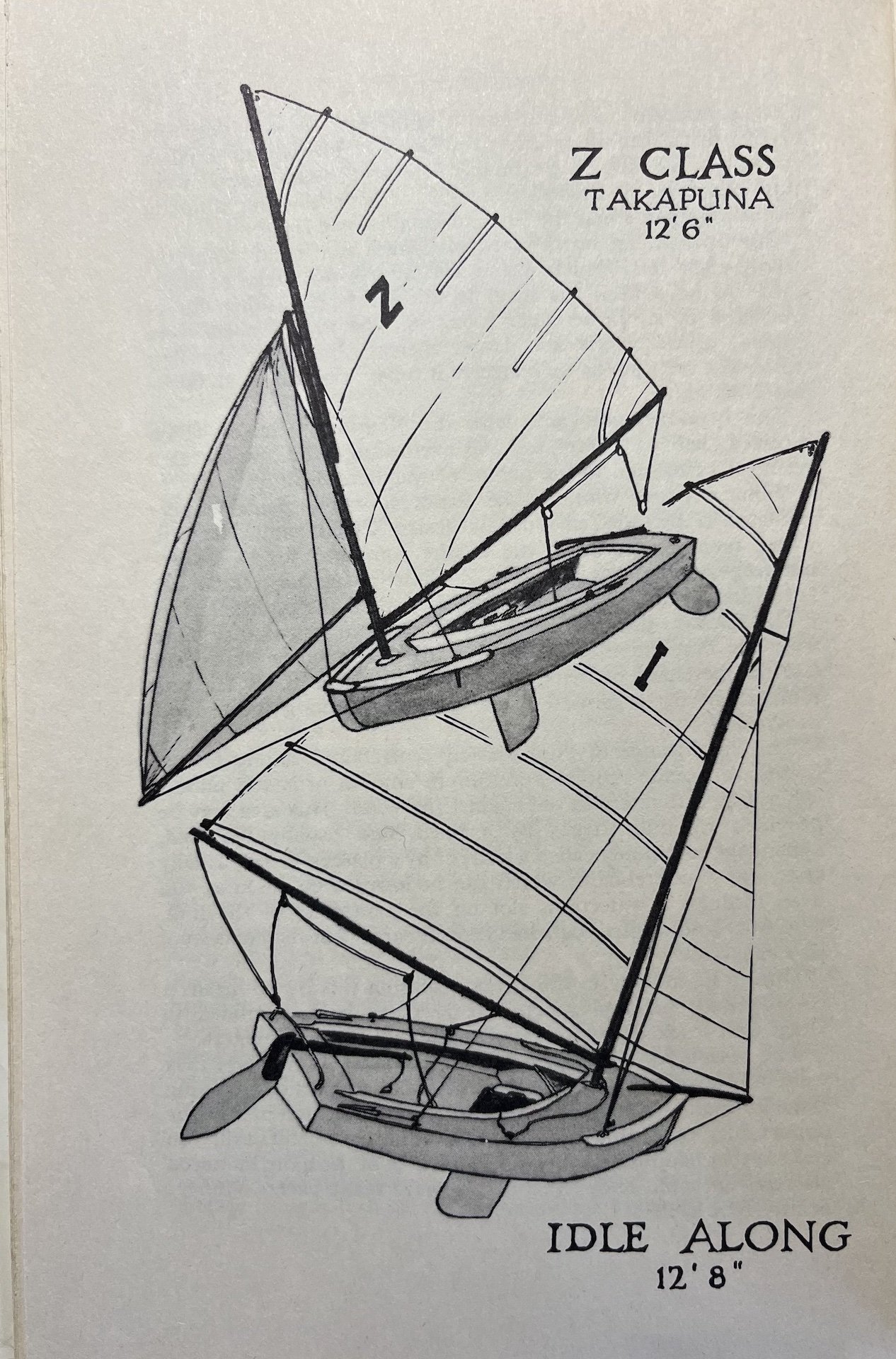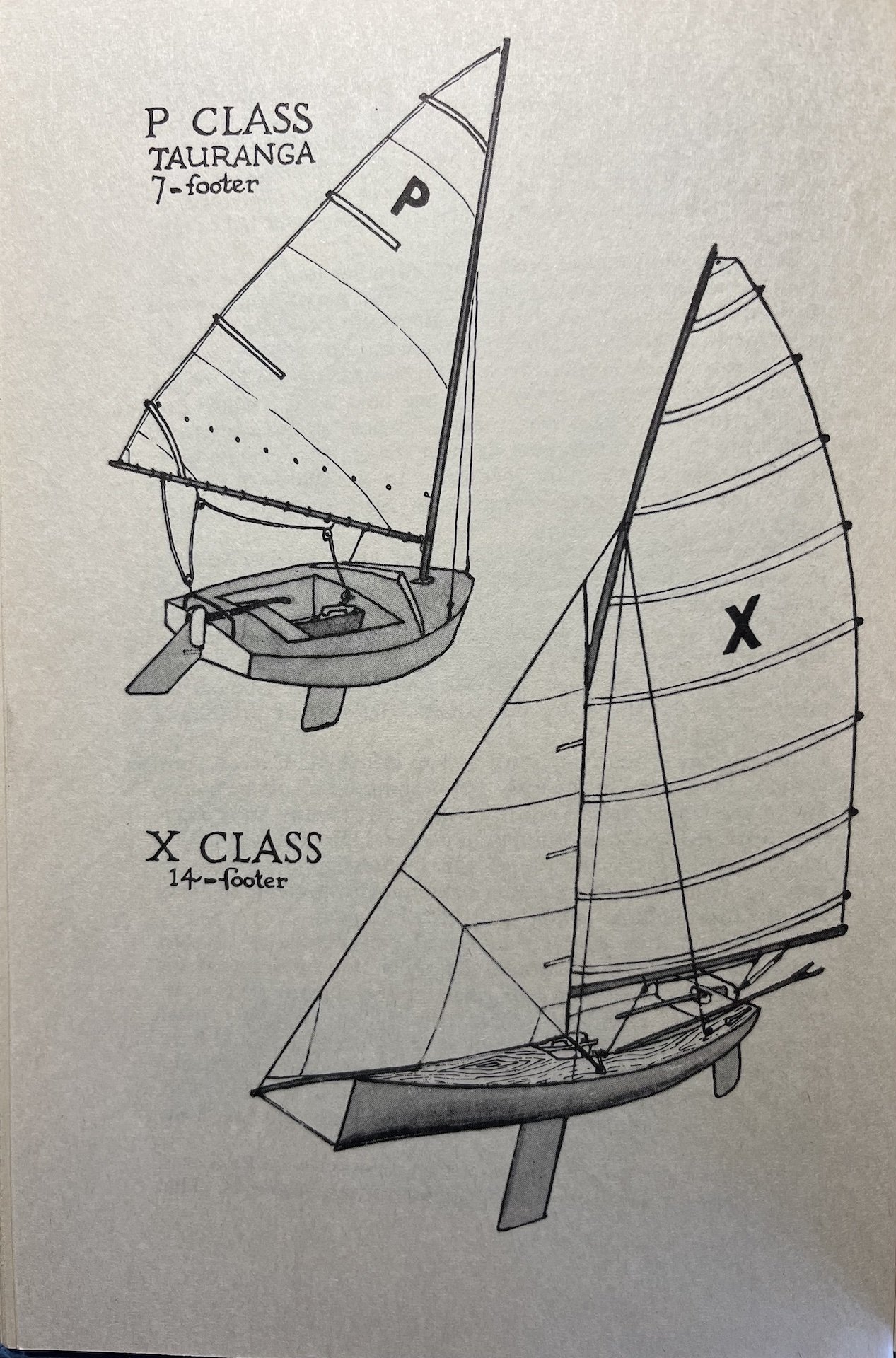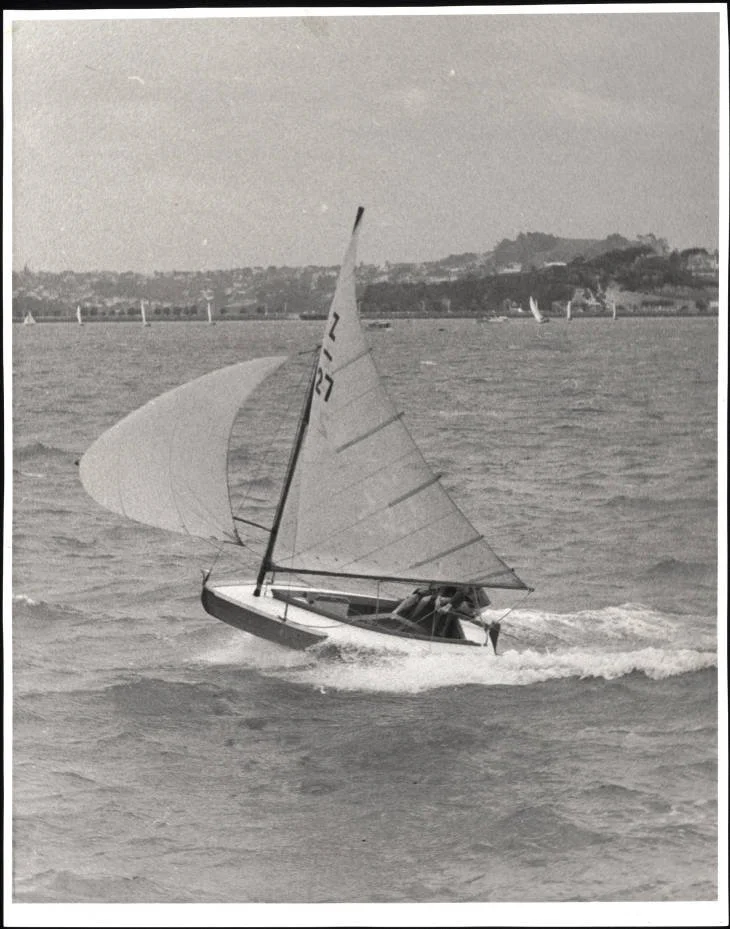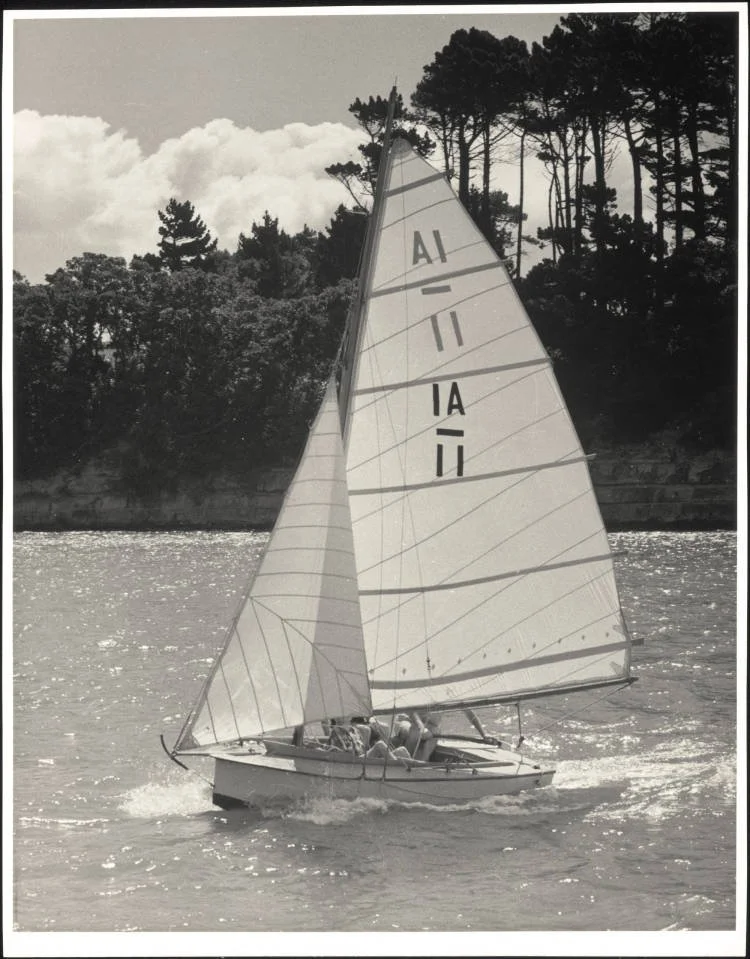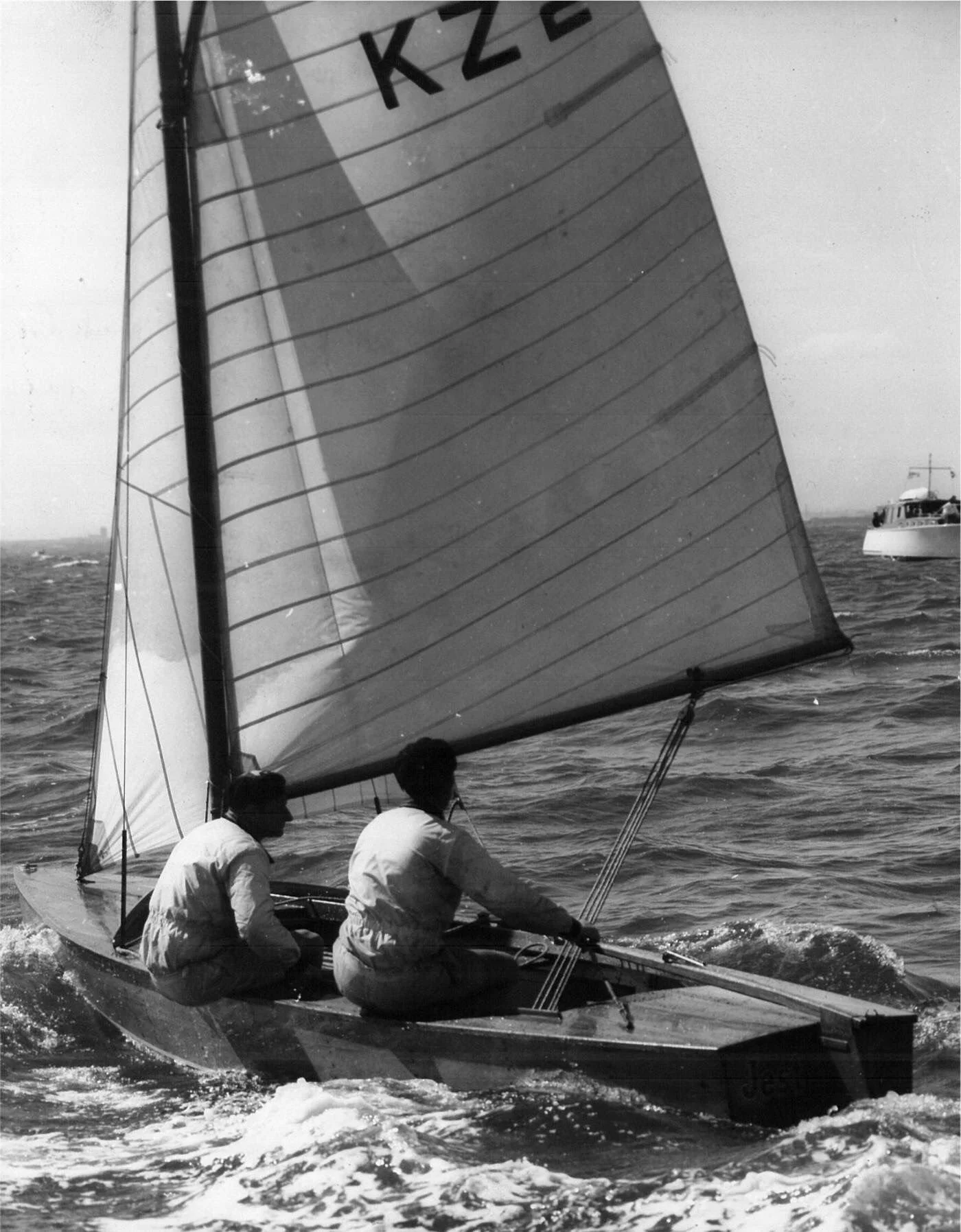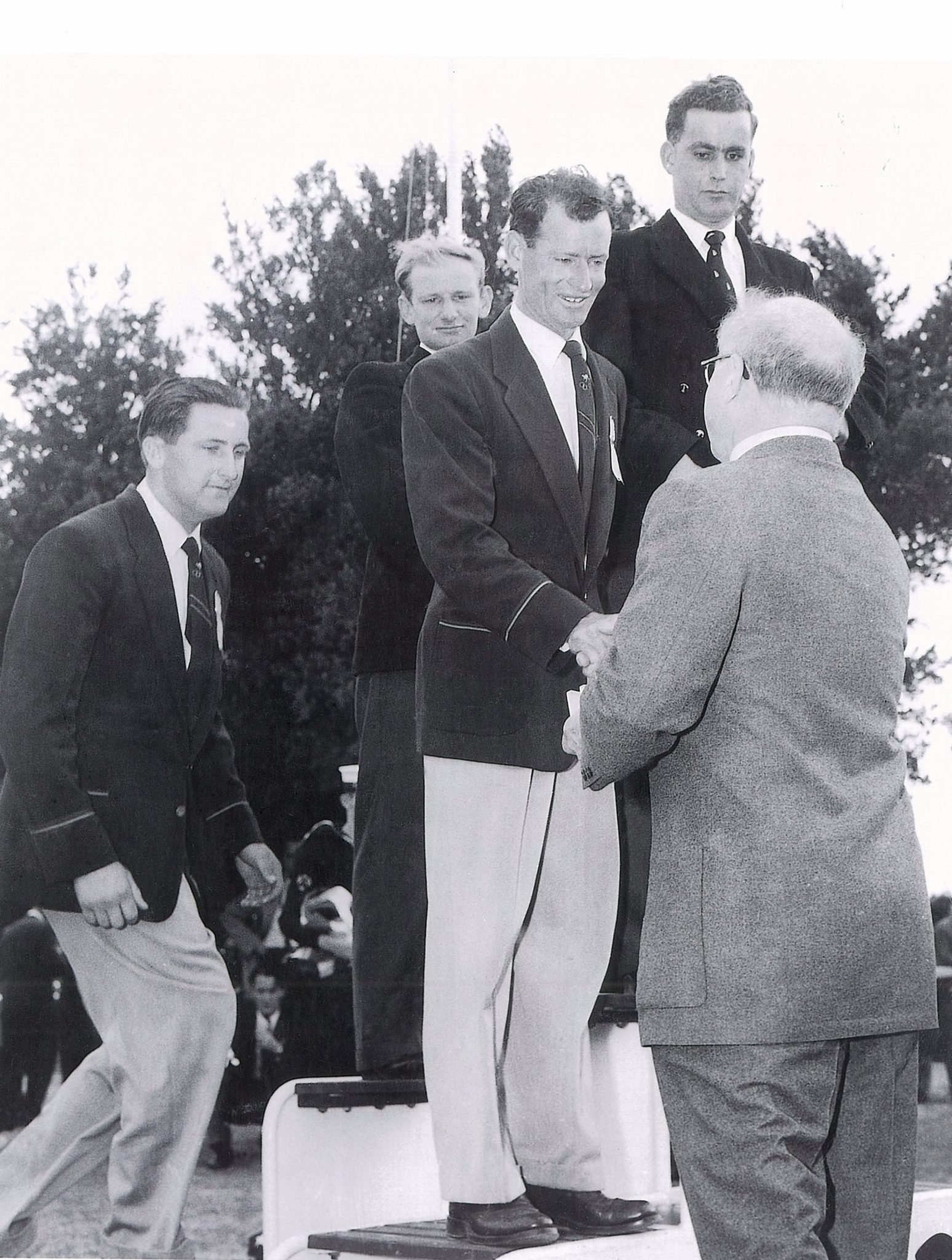Peter Mander - Give a Man a Boat
How to Win Well
A winning crew know they’ve sailed well when their competitors are equally pleased for them. Winning a regatta is a mix of luck made by skill and experience then honesty and courtesy embedded in the rules of the class and sailing.
After a terrific response to our recent articles on the 12 Square Metre Sharpie - the Heavyweights, we thought it worthwhile printing the story of Peter Mander from NZ and Rolly Tasker from Australia, who fought out the medals in this class at the 1956 Melbourne Olympiad.
Both yachtsmen published books with accounts of this career defining competition. They reveal different approaches to sailing mostly shaped by character. Mander’s autobiography, Give a Man a Boat published in 1964 is an account of the Mander family’s long association with dinghy sailing in NZ. Autobiographies tread tricky waters. The temptation to refine and revise for personal posterity is always there. However Mander resists and gives considered advice on improving dinghy sailing in NZ that in the 60’s was still uneven - especially on rules and race management. He also recounts his Olympic tussle with Tasker, leaving a clear impression of Tasker’s character when medals are at stake, leading to a surprising result. We’ve printed his chapter Olympic Regatta, as seen from JEST the New Zealand boat.
Sailing to the Moon: the biography of Rolly Tasker, Australia's greatest all-round yachtsman is a biography by Roland Perry published in 2008. The title is a grand claim but Tasker was a 12 Sq metre Sharpie national and Flying Dutchman world champion. He was a successful offshore campaigner in his multiple SISKA yachts and built a sail-making empire still going in Phuket Thailand. Mander’s observations show Tasker as a tough competitor on the water and that approach was brought to the business of sail design and running a huge loft. The Tasker bio has two chapters of comparative interest – Operation Olympic Games 1956 and Chuckles, Jest and Tears. SWS will publish those another day.
NZ Dinghy Classes
Sketch by Bret de Thier from Give a Man a Boat 1964
Sketch by Bret de Thier from Give a Man a Boat 1964
20C dinghy sailing in NZ was dominated by locally designed boats never found outside the islands and often associated with particular cities. Between the wars, Mander writes that the breakthrough to sailing for everyone came with the design of two ‘unballasted centreboard sailing boats’. These were the 14 foot one-design X Class and the 12ft 6in Z Class known as a Takapuna or Zeddy. By the 1930s the 12ft 8in broad beamed and heavy Idle Along was adopted and soon the little 7ft P Class joined the dinghy fleet with competitions for under 16 year-olds. See SWS Tauranga P Class – Why New Zealanders are good Sailors. 8 July 2021.
International classes like the 12 Sqm Sharpie, Dragon and Finn were only introduced, so NZ sailors could compete in the Olympics. By the 1960’s John Spencer’s brilliant 12ft Cherub skiff become a NZ home-grown international class that still thrives today.
Z Class Takapuna DAWN. Buchanan Collection at Auckland Libraries Heritage Collection.
Idle Along SHEIK 1953. Buchanan Collection at Auckland Libraries Heritage Collection.
Craig Wales sailing P Class SPRAT in the Canterbury YC Regatta 1970. Photo from The Christchurch Star
The Mander Brothers
Good sailors don’t just come from nowhere. Peter, Graham and David Mander were all local and national champions and Olympic Reps in multiple classes from the 1940’s through the 1960’s. The brothers grew up overlooking Christchurch estuary where the Avon and Heathcote Rivers meet. The water has vicious rips, sand bars and currents. This required careful study of the tide and weather to get in and out, let alone stay upright racing old tubs lacking bulkheads and buoyancy.
By the time Peter was 16 he was sailing Takapunas with and against another young local, Jack Cropp who was revered as a sailor and boatbuilder. Elimination trials for the Z Class to represent your home port and compete for the Cornwall Cup really tested understanding of race management, competition rules, inter-club politics and sailing skills. Mander describes;
Contests were once decided by sailing race after race until a crew had won three times, they are now decided on points gained over a fixed series. To emphasise the sailing quality of crews, boats are drawn for prior to each heat and no craft is sailed by the same crew twice. Crews retain their sails and transfer them to different boats they get in the ballots.
From 1945 the three Mander boys won most NZ competitions. The middle brother Graham was the first to win the four major class titles by age 23 (P, Z, IA and X). The boys built their own boats so understood design, construction and measurement. Their Takapuna SCANDAL built at home in 1948 was unbeatable even when skippered by others. That started the rumours about illegality. The detractors claimed the provocatively named dinghy had manipulated available tolerances and NZ newspapers took up the gossip. In most sports, if you cant beat skill go the sledge. The family chose to remain silent knowing SCANDAL had measured right.
1956 Olympics
In 1954, the Manders thought they might have a go at sailing in the Olympic regatta of 1956. We knew nothing of the Dragon or Finn but .... we did know a fair bit about two-man centreboard boats and the twelve-square-metre Sharpie Class fell into that category. Jack Cropp with Peter and Graham decided to build two boats. Their reference was the Sharpie KESTREL on the other side of their estuary. She was built before the war – the first and only one of its class in the country.
Jack and I called our boat JEST, Graham’s boat being christened QUEST ... launched late in 1955. Several other Sharpies were built in NZ to make up the trials won by Peter Mander and Jack Cropp in JEST. They knew they had no yardstick to test their boat’s performance against the experienced Australians and Europeans and held modest hopes of a medal. After arriving in Melbourne, Mander’s assessment of Tasker is worthwhile;
We thought we’d be lucky if we could stay not too far behind the top-liners. Heading the list was an Australian, R L Tasker, whose capable looking face reflected his absolute inner assurance and confidence as did the headlines of Melbourne newspapers which named him the winner – in advance of the contest.
Rolly Tasker was about my age – mid-twenties and size say twelve and a half stone. I always thought him physically elongated from the shoulders to the top of his dark head, but he had plenty of brain in between. He was an odd chap. He talked easily yet liked to be away by himself, completely aloof from the contest bunch. He was quite sure what he said was right, in an assertive way that brooked no contradiction. I had the impression Tasker was so sure of himself that he didn’t have it in him to see himself ever in the wrong. Indeed he had the reputation to back it. He had been Sharpie champion of Australia for some years.
The Sharpies were allocated to the Elwood Sailing Club on a west facing beach. This club was well known from the 1920’s for its own Elwood Seahorse dinghy with a similar design and rig to the Sharpie. When the normal SW was blowing, this meant launching through shore break surf and sailing against slop out to the Olympic course. Mander recounts …..the effort to work the pumps into a strong wind meant you’d arrive at the course half-tired before you started. Ignoring Olympic officials, the Sharpies decided to move themselves to the protected RYCV in Williamstown on the other side of Hobson’s Bay. Only the Soviet Union team and Tasker stayed at Elwood.
Port Phillip Warm-up
Peter Mander and Jack Cropp in JEST on Port Phillip 1956.
Olympic Regatta
Here’s chapter 15 from Give a Man a Boat. Mander’s analysis of the 12 Sq metre Sharpie regatta is fascinating, especially for Port Phillip sailors who have been caught in a squall. Click on images to enlarge and tab right.
Medal ceremony in Catani Gardens next to Royal St Kilda YC (now RMYS). State Library Vic. Melbourne Olympics 1956
Credits
Give a Man a Boat. Peter Mander and Brian O’Neill. Drawings by Bret de Thier. First published by A H & A W Reed 1964.


